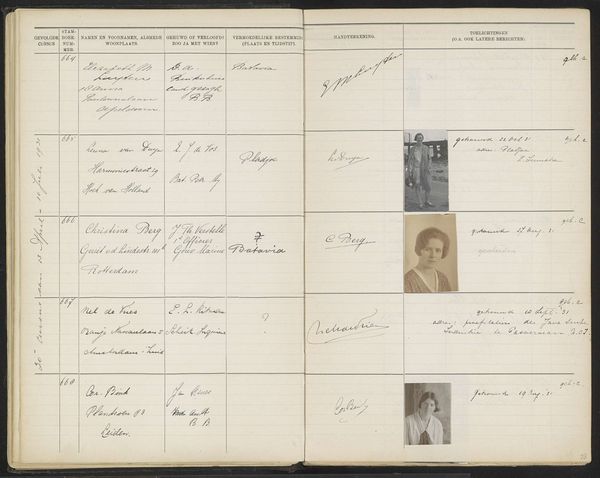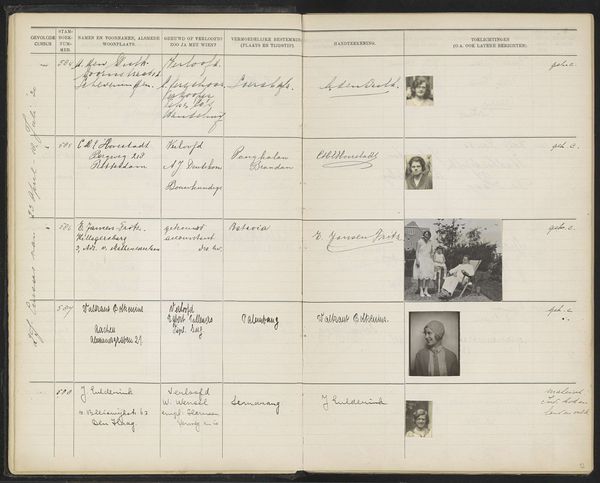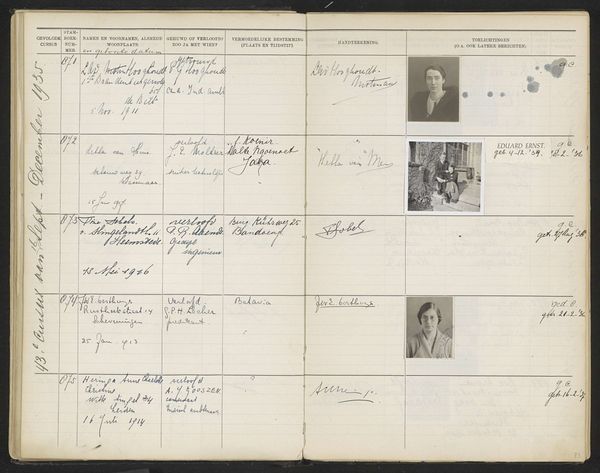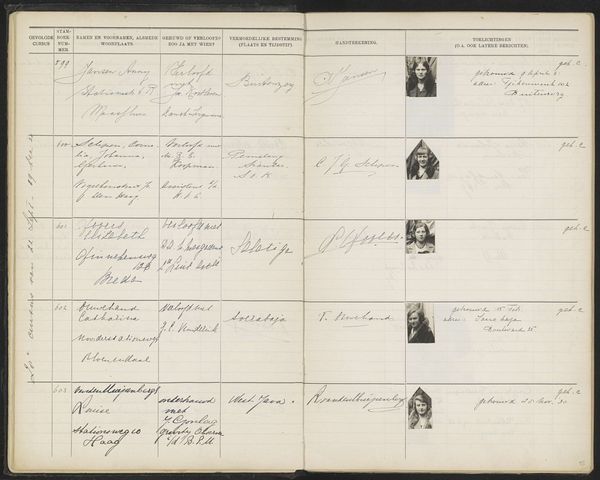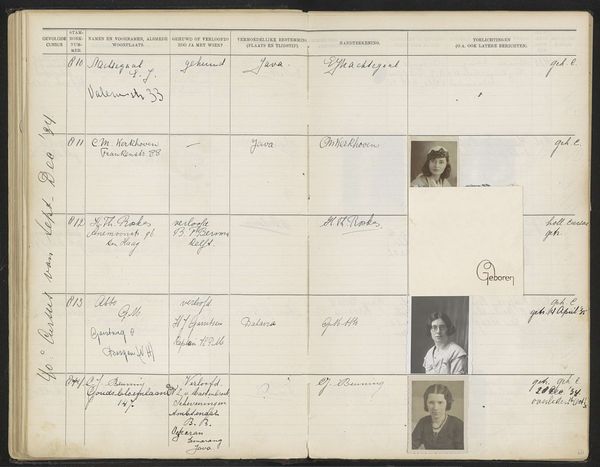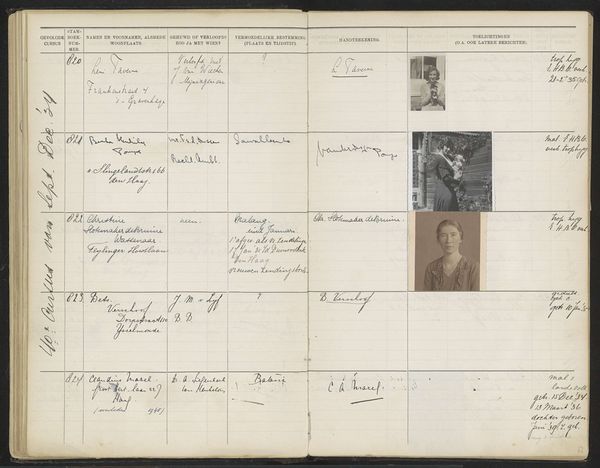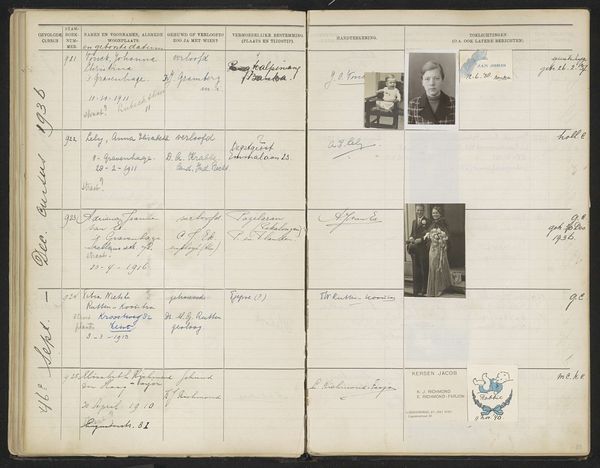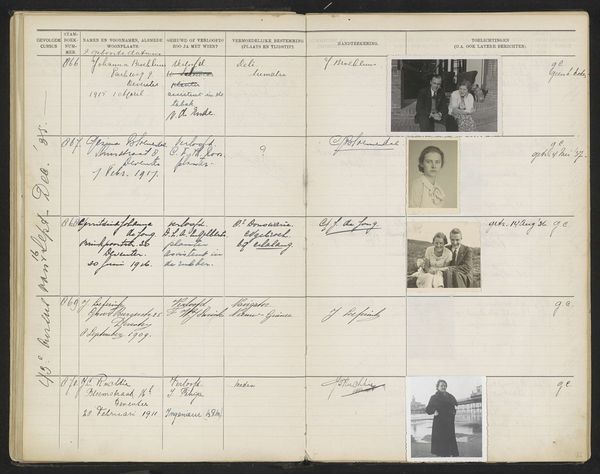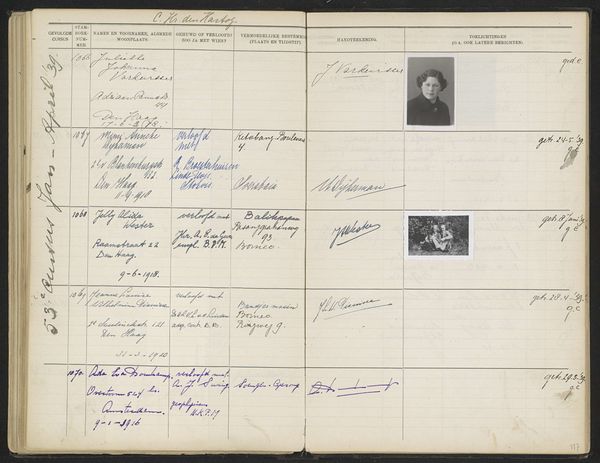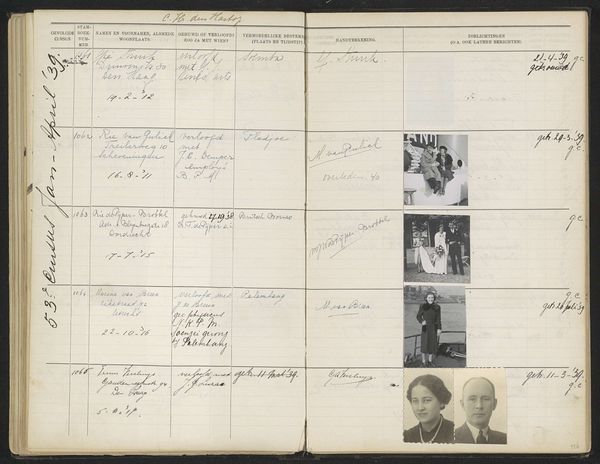
Blad 21 uit Stamboek van de leerlingen der Koloniale School voor Meisjes en Vrouwen te 's-Gravenhage deel II (1930-1949) Possibly 1930 - 1939
0:00
0:00
drawing, print, paper, photography
#
portrait
#
drawing
# print
#
paper
#
photography
Dimensions: height 337 mm, width 435 mm
Copyright: Rijks Museum: Open Domain
Curator: This page from a student registry, likely from the 1930s, presents a series of portraits embedded within a bureaucratic framework. It makes me consider the lives and stories contained within such seemingly objective records. Editor: Yes, the "Blad 21 uit Stamboek van de leerlingen der Koloniale School voor Meisjes en Vrouwen te 's-Gravenhage" is filled with such small windows to the past! I see the rows of names, each meticulously recorded next to a photograph. What stands out to you the most in this piece? Curator: The colonial context is key. These women attended a school specifically designed to prepare them for life in the colonies. What roles were these women expected to fill, and how did the school's curriculum shape their identities? This record isn't just a list of names; it’s a reflection of power structures and gendered expectations within the Dutch colonial project. Editor: That's fascinating, the idea of gendered expectations baked into a registry. Curator: Exactly. The portraits, while seemingly simple, reveal glimpses into these women's lives. How do we interpret their expressions, their clothing, their perceived roles in the colonial landscape? Consider the diversity of backgrounds possibly represented here, and the ways in which the school sought to assimilate them into a specific mold. Does it feel like this registry dehumanizes or empowers its subjects? Editor: It's difficult to say; it feels both, honestly. A standardization with little snippets of individuality. Curator: Indeed. These documents prompt us to confront the uncomfortable aspects of our history, and challenge us to give a voice to the people marginalized by them. What will you carry with you after considering these portraits in context? Editor: A deeper awareness of how seemingly neutral archives can reflect societal biases and power dynamics. Curator: And I’m reminded of the power of individual narratives to resist those imposed frameworks.
Comments
No comments
Be the first to comment and join the conversation on the ultimate creative platform.

